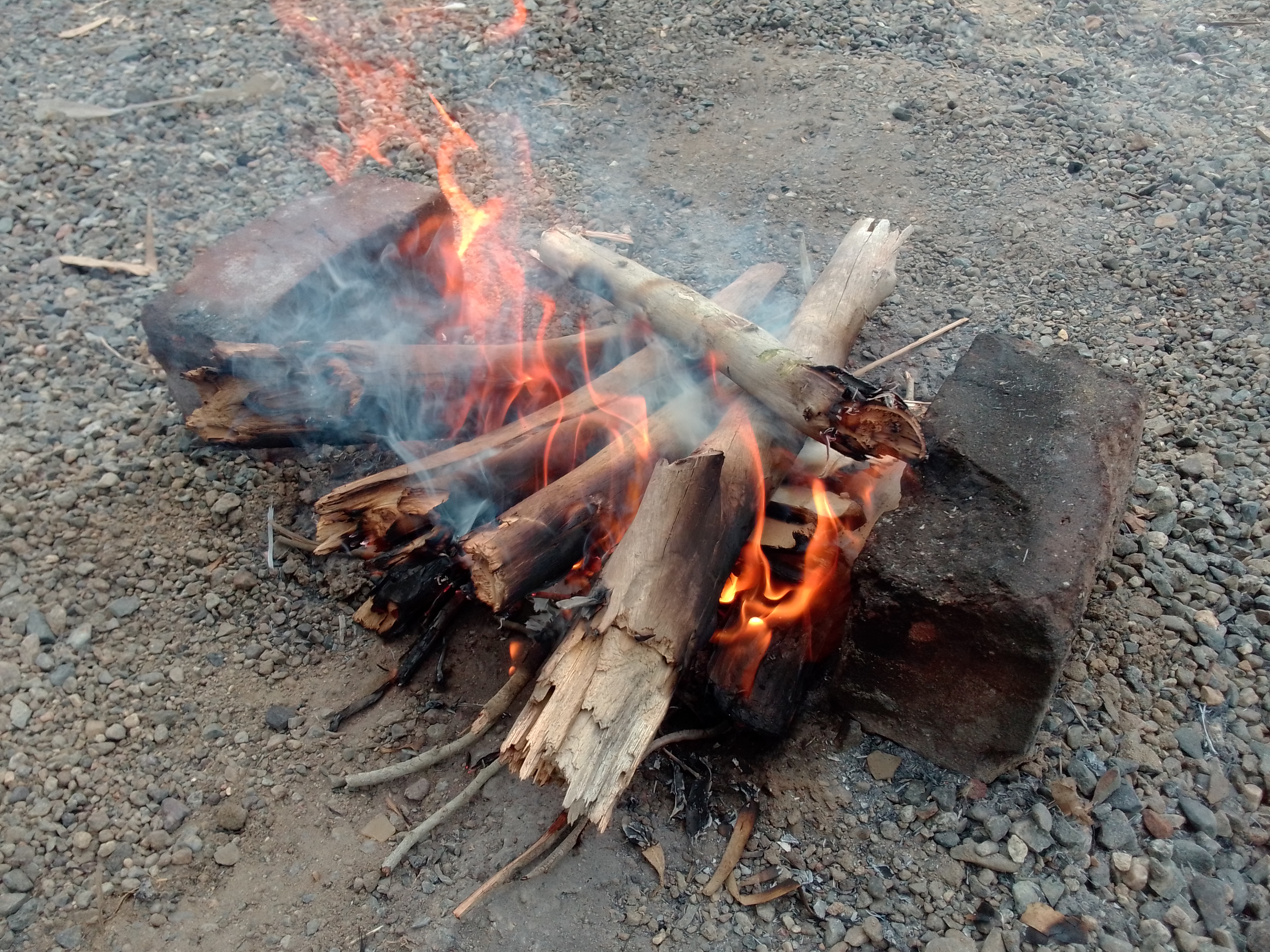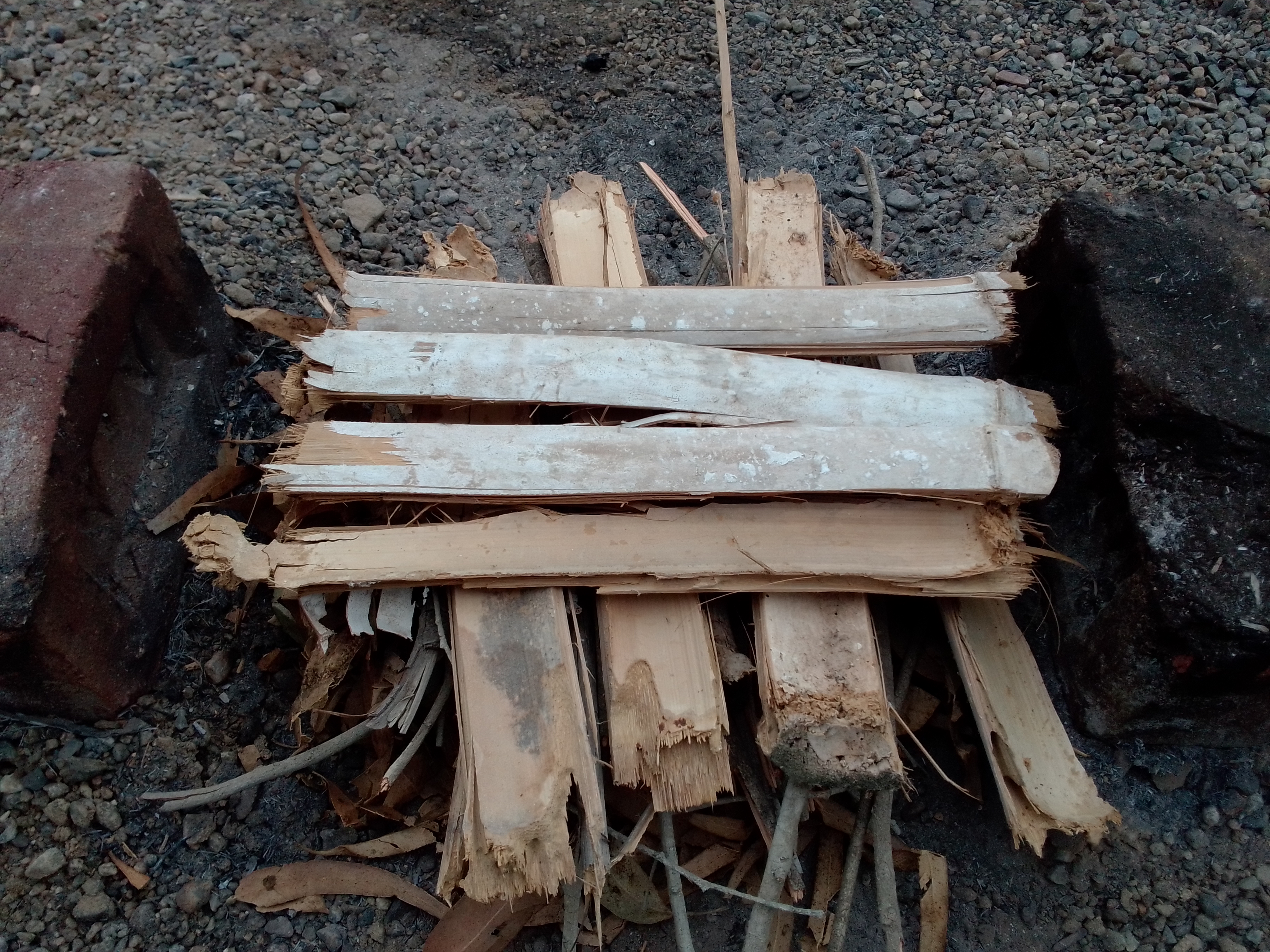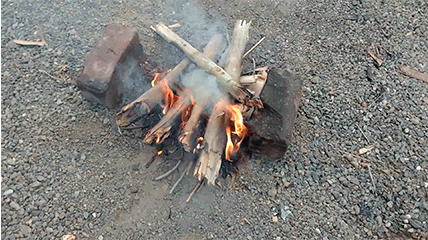Hello dear friends, this time I come to bring you very important information for survival.
Hola queridos amigos, en esta oportunidad les vengo a traer una información muy importante para la supervivencia.
This information will help us if we need to cook and we do not have gas, it can be a picnic, when we need to light the fireplace or any other time we need a natural stove without gas.
Esta información nos va ayudar sí necesitamos cocinar y no tenemos gas, puede ser un día de campo, cuando necesitemos encender la chimenea o en cualquier otro momento que necesitemos una estufa natural sin gas.
Many times when we need to light firewood, I have noticed that many people find it very difficult, using a lot of explosive fuel, even so they do not get good results, I bring them an effective way to not have a bad time, and be able to have a good result at time to build a good stove or campfire without using fuel.
Muchas veces cuando necesitamos encender leña, he notado que muchas personas se le hace muy difícil, utilizando mucho combustible explosivo, aun así no obtienen buenos resultado, les traigo una manera efectiva para no pasar un mal rato, y poder tener un buen resultado a la hora de hacer una buena estufa o una fogata sin tener que usar combustible.

First, choose the place: Locate a good place to make your stove, away from flammable or explosive materials to avoid a fire, the first cause of forest fires, is due to the recklessness of people, so we will be prudent And let's locate a place outdoors, away from plants, trees, wood, cars or any other object that could catch fire. Then you put two stones or bricks that serve as a support to place a grid, a frying pan, a pot or whatever you are going to use for cooking, also make sure that this place where you are going to place the stove is dry.
Primero, elegir el lugar: Ubicar un buen sitio para hacer tu estufa, alejado de materiales inflamables o explosivos para evitar un incendio, la primera causa de los incendios forestales, se debe a la imprudencia de las personas, así que vamos a ser prudente y ubiquemos un lugar al aire libre, alejado de plantas, árboles, madera, autos o cualquier otro objeto que se pueda incendiar. Luego colocas dos piedras o ladrillos que sirvan de soporte para colocar una rejilla, un sartén, una olla o lo que vayas a utilizar para cocinar, asegúrate también de que este lugar donde vas a colocar la estufa esté seco.

Second, wood selection: You must know how to identify the wood that will serve as food for the fire, make sure that it is free of moisture and that it is not green, there must be three types of wood, the first type is tinder, the second semi tinder and the third firewood. Tinder we call the dry leaves of trees that will help us start the fire, semi tinder is tiny branches, sticks or sliced wood, the third is the one that should have the most, since after the stove is on, you will only use this food so it doesn't go out.
Segundo, selección de la madera: Debes saber identificar la madera que servirá de alimento para el fuego, asegúrate que esté libre de humedad y que no esté verde, hay que tener tres tipos de madera, el primer tipo es la yesca, el segundo semi yesca y el tercero la leña. Yesca le llamamos a las hojas secas de árboles que nos ayudarán a iniciar el fuego, semi yesca son diminutas ramas, palitos o madera rebanada, la tercera es la que más debe tener, ya que después que la estufa está encendida, solamente utilizarás está de alimento para que no se apague.




Third, organization of the wood: Before lighting the stove, we must organize the wood, place the tinder first, place the semi-tinder on top of them and finally put the firewood, only in this order will you have a good result. Make sure you have enough tinder and semi tinder, because these are consumed very quickly, if when consuming everything the firewood still does not light, you must remove all the firewood and repeat the operation, placing more, do not worry if the wood exceeds the rocks , or bricks, since when consumed they are leveled.
Tercero, organización de la madera: Antes de encender la estufa, debemos organizar la madera, se coloca primero las yescas, encima de ellas colocar las semi yescas y por último pones la leña, sólo en este orden tendrás un buen resultado. Asegúrate de tener suficiente yesca y semi yesca, debido que estas se consumen muy rápido, si al consumirse todo aún no se enciende la leña, debes sacar toda la leña y repetir la operación, colocando más, no te preocupes si la madera sobrepasa las rocas, o ladrillos, ya que al consumirse se nivelan.



Fourth, lighting the stove: To light the stove use phosphor or lighter, we have to light the bottom, where the tinder is located, then you can fan the flame by blowing with a fan, with this procedure you will not need any type of fuel flammable.
Cuarto, encendido de la estufa: Para encender la estufa utiliza fósforo o encendedor, tenemos que encender la parte de abajo, dónde se encuentra la yesca, luego puedes avivar la llama soplando con un abanico, con este procedimiento no necesitarás ningún tipo de combustible inflamable.


I hope this post is useful to you, see you in a future post 😊
Espero que este post les sea útil, nos vemos en una próxima publicación 😊
Muy buen post, es interesante y realmente útil conocer esta técnica, saludos
Muchas gracias, saludos igualmente
Gran instructivo, gracias por compartir.
Buen dato hace unos días me toco hacer uno y gaste como medio litro de combustible.
Suele pasar, sigue mis recomendaciones y verás que eso no te volverá a pasar
Congratulations, your post has been upvoted by @dsc-r2cornell, which is the curating account for @R2cornell's Discord Community. Enhorabuena, su "post" ha sido "up-voted" por @dsc-r2cornell, que es la "cuenta curating" de la Comunidad de la Discordia de @R2cornell.